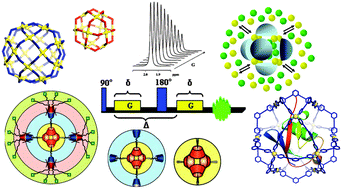Diffusion NMR of molecular cages and capsules
Abstract
In the last decade diffusion NMR and diffusion ordered spectroscopy (DOSY) have become important analytical tools for the characterization of supramolecular systems in solution. Diffusion NMR can be used to glean information on the (effective) size and shape of molecular species, as well as to probe inter-molecular interactions and can be used to estimate the association constant (Ka) of a complex. In addition, the diffusion coefficient, as obtained from diffusion NMR, is a much more intuitive parameter than the chemical shift for probing self-association, aggregation and inter-molecular interactions. The diffusion coefficient may be an even more important analytical parameter in systems in which the formed supramolecular entity has the same symmetry as its building units, when there is a large change in the molecular weight, where many molecular species are involved in the formation of the supramolecular systems, and when proton transfer may occur which, in turn, may affect the chemical shift. Some of the self-assembled molecular capsules and cages prepared in the last decade represent such supramolecular systems and in the present review, following a short introduction on diffusion NMR, we survey the contribution of diffusion NMR and DOSY in the field of molecular containers and capsules. We will first focus on the role played by diffusion NMR in the field of hydrogen bond driven self-assembled capsules. We then survey the contributions of diffusion NMR and DOSY to the study and characterization of metal–ligand cages and capsules. Finally, we describe a few recent applications of diffusion NMR in the field of hydrophobic, electrostatic and covalent containers.

- This article is part of the themed collection: Molecular Containers

 Please wait while we load your content...
Please wait while we load your content...